7 White Hat SEO Techniques for Online Success
Welcome to a riveting journey through the vibrant search engine optimisation (SEO) domain. In this age of fierce online competition, mastering the art of SEO is like having a secret potion for unlocking the doors to online success. Picture this: you've launched your website, crafted compelling content, and awaited a flood of visitors. But alas, it's like standing in a crowded room, trying to get noticed in a sea of voices.
But fret not, dear reader, for we hold the key to standing out in the virtual crowd. Today, we're unveiling seven spectacular White Hat SEO techniques that will boost your website's visibility and skyrocket your rankings on the search engine results pages (SERPs). These ethical strategies are not some black magic tricks that may lead to penalties but tried-and-true methods approved by search engines.
Before we dive headfirst into these SEO gems, let's glance at a staggering stat: Did you know that a jaw-dropping 75% of users never scroll past the first page of search results? Yes, you heard that right! So, optimising your site with White Hat SEO techniques is non-negotiable if you want to rule the roost and attract organic traffic like bees to honey.
Whether you're an enthusiastic blogger, a seasoned business owner, or a curious digital marketer, these seven techniques will give you the knowledge and skills to supercharge your online presence. Say goodbye to the days of feeling invisible on the web and embrace a brighter future filled with endless possibilities.
So, buckle up and get ready to discover the secrets that'll put your website on the digital map. Let's get cracking on these White Hat SEO techniques, propelling you towards the online triumph you deserve! Are you excited? We sure are!
Let's leap into the captivating world of SEO mastery, one technique at a time. Let's make your online success a reality!
Table of Contents
Understanding White Hat SEO

Before diving into the techniques, let's gain a deeper understanding of what White Hat SEO entails and how it differs from its counterpart, Black Hat SEO.
Definition of White Hat SEO
White Hat SEO is a crucial and responsible approach to website optimisation, leveraging ethical and legitimate strategies approved by major search engines such as Google, Bing, and others. Unlike its counterpart, Black Hat SEO, which resorts to questionable tactics to gain unfair advantages, White Hat SEO aims to provide genuine value to users and improve a website's ranking on search engine results pages (SERPs) organically and sustainably.
At the heart of White Hat SEO lies the commitment to the user experience. By focusing on creating high-quality, relevant, and engaging content, White Hat SEO practitioners aim to attract and retain visitors genuinely interested in the information or products offered on the website. This user-centric approach enhances the overall reputation and credibility of the site and increases the likelihood of user satisfaction and return visits.
One of the fundamental elements of White Hat SEO is keyword research. By identifying and targeting relevant keywords and phrases that users commonly search for, website owners can optimise their content to match user intent effectively. This strategy helps search engines understand the website's relevance to specific queries, resulting in higher rankings for relevant search terms.
Furthermore, White Hat SEO emphasises the importance of backlinks from authoritative and trustworthy sources. Rather than resorting to link schemes or purchasing low-quality links, ethical SEO practitioners focus on building natural and organic link profiles. This involves creating valuable and shareable content that naturally attracts inbound links from other reputable websites, indicating to search engines that the site is a reliable and valuable resource.
Another aspect of White Hat SEO involves optimising the website's technical aspects. This includes ensuring fast loading times, mobile-friendliness, and a user-friendly interface. Search engines prioritise websites that provide a seamless experience across different devices, rewarding them with better rankings.
In addition to the practices above, White Hat SEO involves properly utilising meta tags, relevant headings, and descriptive image alt text. These elements contribute to improved website accessibility and better understanding by search engine crawlers, leading to enhanced visibility in search results.
An important aspect of White Hat SEO is the adherence to search engine guidelines. By staying updated on the latest algorithm changes and best practices, ethical SEO practitioners avoid potential penalties or ranking drops resulting from manipulative or deceptive techniques.
White Hat SEO is a foundation for long-term success in the digital landscape. While it may require more time and effort compared to unethical practices, its sustainable growth and reputation make it a worthwhile investment for website owners and businesses. By putting users first and following the rules set by search engines, White Hat SEO helps websites climb higher in SERPs and contributes to a healthier and more trustworthy online ecosystem.
Contrasting White Hat SEO with Black Hat SEO
While White Hat SEO prioritises user experience and adheres to search engine guidelines, Black Hat SEO adopts deceptive and unethical practices to achieve higher rankings in a shorter time frame. These practices may lead to short-term gains but can result in severe penalties and long-term damage to a website's reputation.
Importance of White Hat SEO
White Hat SEO techniques are essential for long-term success and a reputable online presence. Businesses can foster trust, credibility, and sustainable growth by aligning with search engine algorithms and user preferences.
Fundamental White Hat SEO Techniques
Now that we understand the significance of White Hat SEO, let's explore some of the most effective techniques to boost your website's visibility and organic rankings.
1 – Quality Content Creation

One adage in the ever-evolving SEO landscape reigns supreme: “Content is king.” In this digital realm, your content's quality, relevance, and engagement can make or break your online presence. Embracing White Hat SEO practices, which prioritise ethical and user-centric strategies, centres around one core principle: creating valuable content that enriches the online experience for users.
The foundation of White Hat SEO is built upon crafting high-quality, informative, and captivating content. When you invest time and effort into producing content that genuinely resonates with your audience, you attract users to your website and foster a sense of trust and credibility with them. In turn, this trust encourages other websites and online platforms to link back to your content, boosting your site's authority in the eyes of search engines.
Intriguingly, statistics reveal that websites with active blogs enjoy a significant advantage. They boast a staggering 434% more indexed pages than websites that lack a consistent content publishing strategy. This plethora of indexed pages is pivotal in enhancing your chances of ranking well on search engine results pages. Each indexed page serves as another potential entry point for users to discover your website, further increasing your online visibility and widening your digital footprint.
Moreover, one of the key elements that search engines use to assess the credibility and relevance of a website is its activity level. By consistently publishing fresh, valuable, and relevant content, you signal to search engines that your website is an authoritative source within its niche. This continuous engagement reaffirms your website's significance and demonstrates that you actively contribute to the knowledge base in your field.
Beyond the technical aspects of SEO, creating compelling content fosters a strong sense of loyalty and connection with your audience. When users find value in what you offer, they are more likely to return for more, subscribe to your updates, and even become brand advocates. This organic growth of your audience translates into increased traffic and bolsters your website's reputation as a reliable and influential entity.
To harness the full potential of content in SEO, it is crucial to understand your target audience's needs and preferences. Conducting thorough research into the topics that resonate with your users will enable you to tailor your content to meet their expectations. By addressing their pain points, answering their questions, and providing valuable insights, you create a user-centric experience that sets you apart from the competition.
2 – Keyword Research and Optimisation
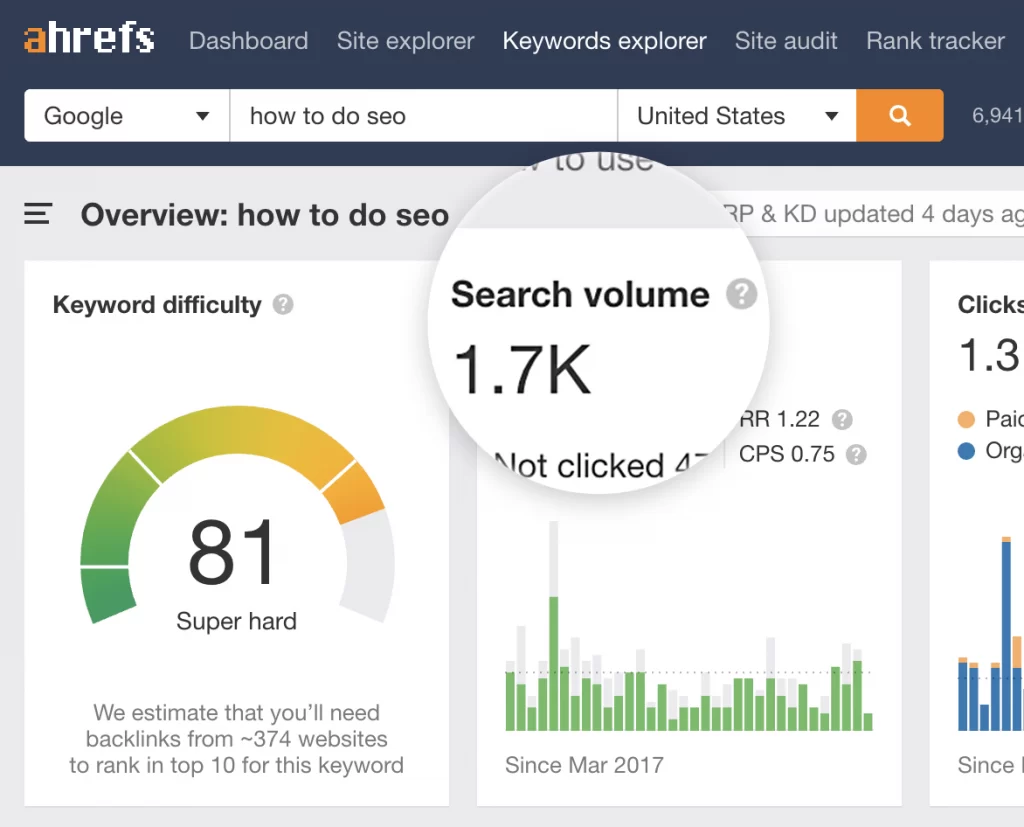
Keyword research forms the fundamental pillar of any successful SEO strategy. It involves meticulously identifying and selecting relevant keywords and phrases that directly resonate with your business offerings and cater to your target audience's search intent. By understanding the language and terms potential customers use to find products or services like yours, you can strategically position your website to appear in their search results.
To conduct adequate keyword research, several powerful tools come to the forefront, empowering marketers and website owners to refine their SEO efforts. Some widely used tools include Google Keyword Planner, SEMrush, and Ahrefs. These platforms provide invaluable insights into search volume, competition levels, and potential keyword opportunities, assisting you in discovering high-value keywords that strike the ideal balance between being frequently searched and having a manageable level of competition.
Once you have compiled a well-researched list of relevant keywords, the next crucial step is to optimise your website's content, meta tags, and URLs to incorporate these keywords organically. By doing so, search engines can better understand your pages' context and relevance, boosting your chances of ranking higher in search results.
However, it is essential to tread carefully and avoid the detrimental practice of keyword stuffing. Keyword stuffing refers to the excessive and unnatural repetition of keywords in content to manipulate search engine rankings. This outdated tactic needs to provide value to users and can also lead to search engines penalising your website, adversely impacting your rankings and online visibility.
Instead, focus on creating high-quality, engaging content that genuinely meets the needs of your target audience. Seamlessly integrate your chosen keywords into the content, ensuring they flow naturally and enhance the overall user experience. Remember that user satisfaction and relevance are vital factors that search engines consider when determining the ranking of web pages.
In addition to optimising on-page elements, consider creating a diverse range of content types, such as blog posts, infographics, videos, and interactive tools, centred around your target keywords. This content diversity caters to different user preferences and increases the likelihood of attracting inbound links, a crucial factor in search engine algorithms.
Regularly monitor the performance of your chosen keywords using web analytics tools. Analysing the data will help you identify trends and opportunities for further improvement. SEO is an ongoing process, and continuously refining your strategy based on real-world data is essential for maintaining a competitive edge in search engine rankings.
Moreover, don't limit your keyword research to just one round. As your business evolves and the digital landscape changes, so will your audience's search behaviour. Stay proactive and regularly update your keyword research to stay ahead of emerging trends and capitalise on new opportunities.
3 – On-Page Optimisation
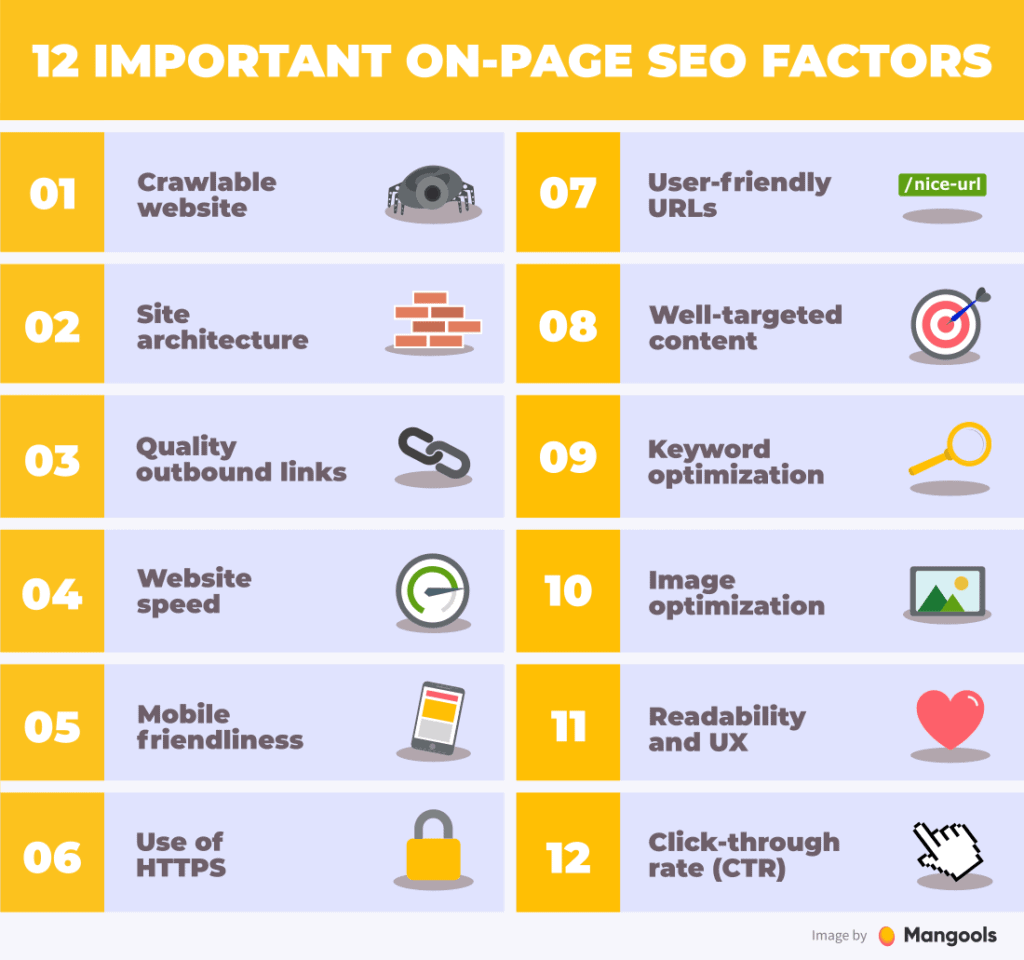
Optimising on-page is crucial to enhance your web pages' search-engine friendliness. By fine-tuning specific elements, you can significantly improve your website's visibility and rank higher in search engine results. Here are some key aspects to focus on when performing on-page optimisation:
Title Tags: Title tags are like the headlines of your web pages. Each page should have a unique and descriptive title that accurately represents its content. Incorporate relevant keywords into the title to ensure that search engines can understand the topic and relevance of your page. A well-crafted title helps search engines index your content correctly and entices users to click through to your website.
For example, if you have a web page about “Top 10 Healthy Smoothie Recipes,” a suitable title could be “Delicious and Nutritious: 10 Healthy Smoothie Recipes to Boost Your Health.”
Meta Descriptions: Meta descriptions briefly summarise your page's content and are displayed beneath the title in search engine results. Crafting compelling and engaging meta descriptions can increase the likelihood of users clicking on your link. Be concise, descriptive, and persuasive, enticing users to visit your website for more information.
Continuing with the smoothie recipe example, a captivating meta description could be: “Indulge in a collection of mouthwatering and nourishing smoothie recipes that will revitalise your body and satisfy your taste buds. Get the best healthy smoothie ideas here!”
Headers: Properly using headers to structure your content is essential for user experience and SEO. Headings, such as H1, H2, H3, etc., help organise your content into sections, making it easier for search engines and readers to navigate your page.
When creating headers, try to incorporate relevant keywords naturally while maintaining a coherent flow of information. This practice enhances the readability of your content and signals to search engines the essential topics covered on your page.
For instance, if one section of your smoothie recipe page focuses on “Vitamin-Packed Ingredients,” use an H2 header like “Discover the Power of Vitamin-Packed Ingredients” to emphasise the importance of these elements.
URL Structure: Simplifying your URLs and making them relevant to the content they represent is crucial for both search engines and users. Avoid long, confusing URLs with random characters or numbers. Instead, use clear and concise URLs that include essential keywords related to the content.
For the smoothie recipe page, a clean and keyword-inclusive URL might look like: www.yourwebsite.com/healthy-smoothie-recipes.
By optimising these on-page elements, you not only improve your website's search engine rankings but also enhance user experience, which can lead to increased engagement, lower bounce rates, and higher conversion rates. Additionally, combining on-page optimisation with other SEO strategies like high-quality content creation, mobile responsiveness, and fast loading times will further strengthen your website's online presence and visibility. Regularly monitoring and updating your on-page SEO efforts will help you stay competitive in the ever-evolving digital landscape.
4 – Mobile-Friendly and Responsive Design
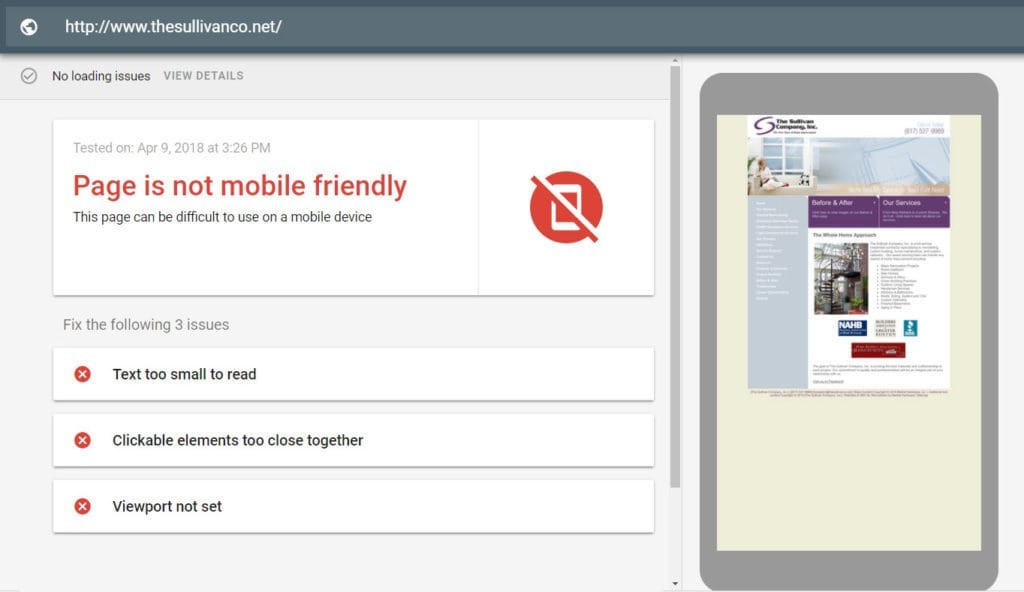
In today's digital era, the dominance of mobile devices in internet usage cannot be underestimated. As more and more people rely on their smartphones and tablets to access the web, having a mobile-friendly website has become essential for businesses and organisations. A website that fails to cater to the needs of mobile users risks losing a significant portion of its potential audience.
One of the critical elements in ensuring a smooth mobile experience is adopting a responsive web design. This cutting-edge approach enables your website to dynamically adjust its layout and content based on the screen size and device used to access it. Whether it's a tiny smartphone screen, a larger tablet display, or a traditional desktop monitor, a responsive design allows your website to adapt effortlessly, providing users with an optimal browsing experience regardless of their device.
A mobile-friendly website significantly enhances user engagement, satisfaction, and conversions by offering a seamless and user-friendly interface. When users can easily navigate your site, read content, and interact with your services or products on their mobile devices, they are more likely to stay longer and return for future visits. This increased user retention directly translates into better brand loyalty and an improved online reputation.
The statistics reinforce the critical importance of optimising your website for mobile users. According to Google, 61% of users are unlikely to return to a mobile site if they encounter difficulties accessing it. This alarming figure underscores the significant consequences of not prioritising a mobile-friendly approach. Users have grown accustomed to the convenience and speed of mobile browsing, and if your website fails to meet these expectations, they may quickly look elsewhere for the information or services they seek.
Moreover, having a mobile-friendly website can positively impact your search engine rankings. Search engines like Google consider a website's mobile-friendliness when determining its position in search results. A responsive design can boost your SEO efforts and help your site rank higher, driving more organic traffic and potential customers to your online platform.
To stay competitive in today's fast-paced digital landscape, businesses and organisations must invest in creating a mobile-friendly website. This investment ensures a seamless user experience for mobile users, enhances brand credibility, fosters customer trust, and contributes to long-term success in the ever-evolving online market.
5 – Page Speed Optimisation
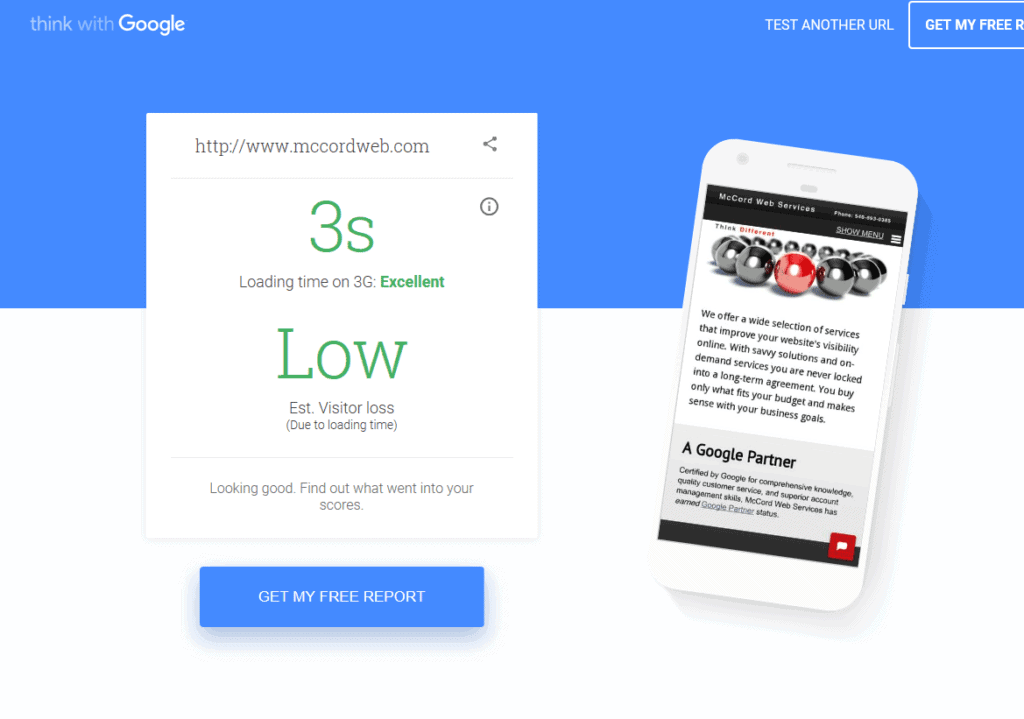
Page speed plays a pivotal role in determining the overall ranking of a website, making it a crucial aspect that significantly influences user experience. When web pages load slowly, it can harm a site's performance, leading to higher bounce rates, reduced user engagement, and a drop in conversions. As search engines like Google prioritise delivering the best user experience, they take page speed into account when ranking websites.
Google's PageSpeed Insights is a powerful tool designed to assess a website's loading speed and provide valuable insights for optimisation. By utilising this tool, web admins and developers can gain a deeper understanding of the factors affecting their site's performance and identify areas for improvement.
One of the critical areas that PageSpeed Insights addresses is image compression. Images are often essential webpage components but can significantly contribute to slow loading times if not optimised. The tool suggests ways to compress images without compromising their quality, thus reducing the file size and speeding up the loading process. This enhances user experience and positively impacts a site's overall performance in search engine results.
Additionally, caching is another crucial aspect that PageSpeed Insights focuses on. Implementing effective caching mechanisms allows a website to store certain elements or data in the user's browser. As a result, subsequent visits or navigation within the site become faster since the browser doesn't need to fetch all the content from the server each time. Leveraging caching effectively can drastically improve load times and provide a seamless user experience.
Another factor PageSpeed Insights addresses is minimising server response time. The time it takes for a server to respond to a user's request is critical in determining how quickly a page will load. Web admins can reduce latency and create a more responsive website by identifying areas where server response time can be optimised.
In addition to the technical aspects, PageSpeed Insights also considers mobile optimisation. Mobile devices are now the primary internet access for many users, and search engines prioritise mobile-friendly websites. The tool evaluates how well a website performs on mobile devices and provides recommendations to enhance the mobile user experience.
Furthermore, improving page speed impacts user experience and search engine ranking and can lead to better conversion rates. Studies have shown that faster-loading pages are more likely to convert visitors into customers or subscribers. By addressing the issues highlighted by PageSpeed Insights, website owners can create a more efficient and user-friendly online environment that encourages users to engage and take desired actions.
6 – Link Building through Outreach

Link building is an indispensable component of a successful SEO strategy, pivotal in improving a website's search engine rankings and overall online visibility. However, it is crucial to approach link-building with caution and a focus on quality rather than quantity. Search engines, like Google, highly value high-quality backlinks from reputable websites, as they indicate the credibility and authority of a site.
The first step in effective link building is to earn backlinks from authoritative and trustworthy websites. These backlinks act as powerful endorsements, signalling to search engines that your content is valuable and worth recommending to their users. Relevance is vital here; seek to connect with websites related to your niche or industry, as this will enhance the contextual relevance of your links.
One way to acquire such links is through outreach and content partnerships. Reach out to other website owners, bloggers, or industry influencers who share similar interests and propose collaborations. It could involve creating valuable content, co-authoring blog posts, or even providing them with helpful resources they can link back to from their platforms. This mutually beneficial approach can foster long-term relationships, leading to a steady stream of high-quality backlinks.
Another effective method is guest posting on relevant blogs. Seek authoritative blogs or websites in your industry that accept guest contributions and offer to write informative and engaging content for their audience. Ensure that your guest posts are of top-notch quality and provide genuine value to readers. This will showcase your expertise and allow you to include a link to your website in the author's bio, driving valuable traffic and authority.
Participating actively in industry forums and online communities can also aid in building a robust backlink profile. Engage in meaningful discussions, provide helpful insights, and share your expertise. When relevant, link back to your website's content as a reference to give more value to other users. However, remember to avoid spammy practices and focus on genuinely contributing to the community to avoid being penalised by search engines.
Leveraging social media platforms can play a vital role in amplifying your link-building efforts. Share high-quality content on your social channels, and encourage your followers to engage with and share it further. When your content gains traction on social media, it increases the likelihood of attracting the attention of other website owners or influencers who might link to it from their sites or blogs.
While building a solid backlink profile is essential, it is equally crucial to maintain a natural link profile. Avoid using black hat or manipulative tactics, such as buying links or participating in link schemes, as these practices can result in severe penalties from search engines.
7 – Social Media Engagement

A solid social media presence and active engagement must be considered, as it can significantly impact your SEO efforts and overall online visibility. Maintaining active and well-managed social media profiles creates a dynamic platform to connect with your audience, foster brand awareness, and enhance your digital marketing strategies.
One of the key benefits of a robust social media presence is the increased brand visibility it brings. When you regularly post engaging content and interact with your followers, your brand's name, logo, and message become more recognisable to a broader audience. As a result, more people will be exposed to your brand, products, or services, leading to potential new customers and increased traffic to your website.
Content sharing is another powerful aspect of social media that positively influences SEO. When your audience finds your posts interesting, informative, or entertaining, they are more likely to share them with their networks. This creates a ripple effect, allowing your content to reach a wider audience organically. The more shares your content receives, the more signals search engines receive that your content is valuable and relevant, potentially boosting your website's ranking in search results.
Social media platforms also provide opportunities for earning backlinks, which is crucial for improving your website's authority and search engine ranking. As your content gets shared and liked, other websites and blogs may take notice and link back to your posts or website. These backlinks are seen as endorsements of your content's credibility, signalling to search engines that your website is a reliable and valuable source of information. As a result, your website's domain authority may improve, leading to higher search engine rankings.
Search engines have increasingly incorporated social signals into their algorithms in recent years to assess a website's authority and credibility. Social signals refer to various engagement metrics on social media, such as likes, shares, comments, and overall follower count. When search engines detect high engagement and activity on your social media profiles, they interpret it as a positive indication of your website's popularity and relevance. Consequently, this can positively impact your SEO efforts, improving search engine rankings.
To maximise the impact of your social media presence on SEO, it's crucial to maintain consistency in posting high-quality content that resonates with your target audience. Regularly engaging with your followers, responding to their comments, and addressing their concerns can foster community and trust around your brand. This can encourage more social interactions and content sharing, further strengthening your online presence and search engine rankings.
Contrasting White Hat SEO with Black Hat SEO
In this section, let's delve deeper into the differences between White Hat and Black Hat SEO and why the former is the preferred approach for sustainable online success.
Characteristics of Black Hat SEO
Black Hat SEO uses aggressive and unethical tactics to manipulate search engine rankings. Some standard Black Hat techniques include:
- Keyword stuffing: Excessive use of keywords within content or meta tags, often irrelevant and unnatural.
- Cloaking: Presenting different content to search engines and users to deceive search algorithms.
- Hidden text and links: Hiding text or links from users but making them visible to search engines to boost rankings.
- Private Blog Networks (PBNs): Creating a network of interlinked websites to inflate backlinks artificially.
- Buying links: Purchasing links from low-quality or spammy websites to improve rankings.
Risks of Black Hat SEO
While Black Hat techniques may lead to short-term gains in rankings, their risks far outweigh the benefits. Search engines are continually evolving to detect and penalise websites employing unethical practices.
Penalties can range from a drop in rankings to complete removal from search engine results. Recovering from such penalties can be a long and arduous process, causing significant damage to a business's online reputation and revenue.
The Long-Term Benefits of White Hat SEO
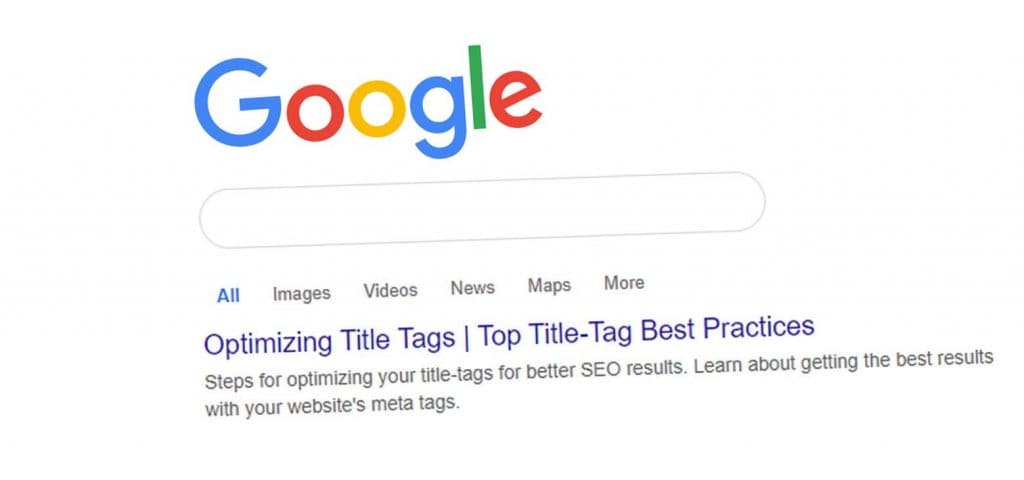
White Hat SEO may require patience and consistent effort, but its long-term benefits are worth the investment. Let's explore some of the advantages of following ethical SEO practices.
Sustainable Rankings and Traffic Growth
White Hat SEO focuses on providing value to users and adhering to search engine guidelines. By offering high-quality content and a positive user experience, your website is more likely to secure sustainable rankings and experience steady traffic growth over time.
Build Trust and Credibility
Ethical SEO practices foster trust and credibility with both users and search engines. As your website ranks higher for relevant searches, users perceive it as a reliable source of information or products, increasing trust and brand loyalty.
Adaptability to Algorithm Updates
Search engines frequently update their algorithms to enhance user experience and combat spam. Websites that rely on White Hat SEO are better equipped to adapt to these changes, as their focus on user experience aligns with the search engines' intentions.
Lower Risk of Penalties
By avoiding unethical tactics, you significantly reduce the risk of incurring penalties from search engines. This ensures your website maintains its reputation and authority, allowing you to concentrate on growing your online presence.
Actionable Steps to Optimise Using White Hat SEO
Implementing White Hat SEO techniques requires a strategic approach and continuous effort. Let's outline some actionable steps to optimise your website effectively.
1 – Conduct a Comprehensive SEO Audit
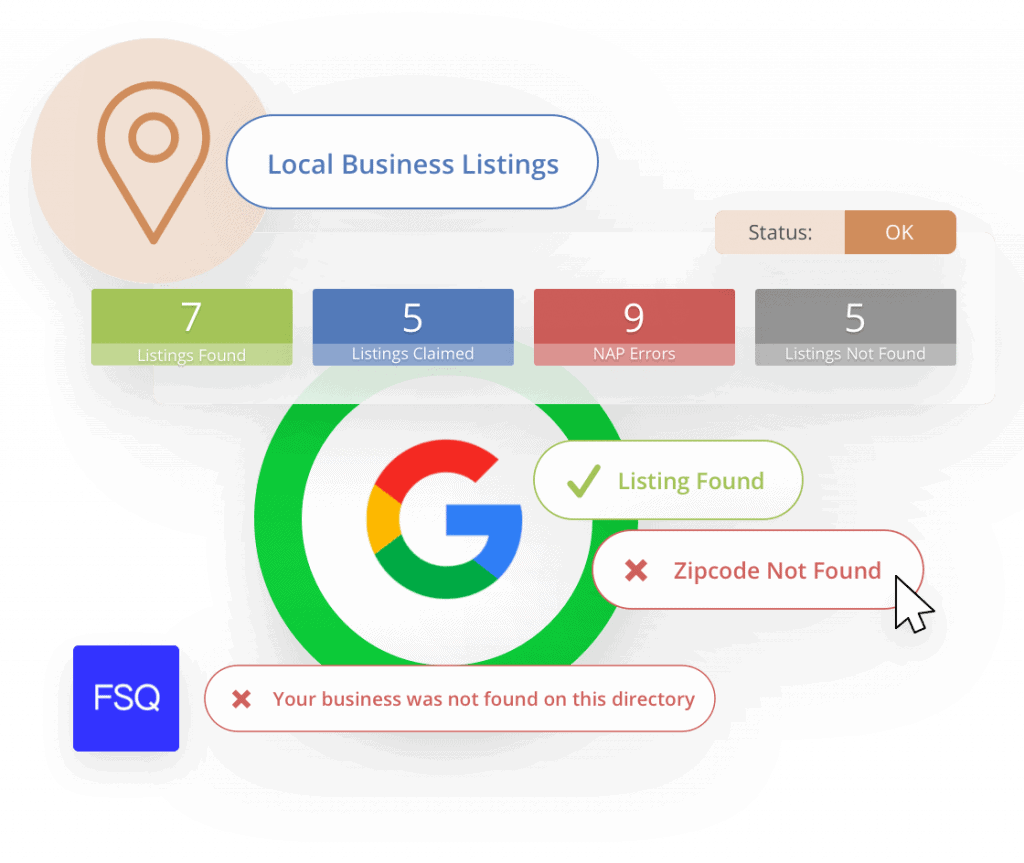
Embarking on a comprehensive and successful SEO strategy starts with conducting an in-depth SEO audit of your website. This essential process will help you identify and rectify technical issues, leverage on-page optimisation opportunities, and enhance the overall quality of your content. Utilising various tools such as Google Search Console, Google Analytics, and SEO crawlers will play a crucial role in gaining valuable insights and maximising the effectiveness of your SEO efforts.
- Technical SEO Analysis: The first step in the SEO audit is to focus on technical aspects that impact your website's visibility and performance. Ensure that search engines can efficiently crawl and index your pages. Check for broken links, duplicate content, and issues with your website's sitemap or robots.txt file. Optimising site speed and mobile responsiveness affect user experience and search engine rankings. By fixing these technical glitches, you pave the way for a smoother and more accessible website, which users and search engines will receive well.
- On-Page Optimisation Review: Next, delve into the on-page elements of your website. This involves analysing your page titles, meta descriptions, headings, and URL structures. Ensure each page has a unique and relevant title that accurately describing the content. Craft compelling meta descriptions encouraging users to click through from search engine results. Structuring your headings with proper hierarchy (H1, H2, H3, etc.) and incorporating targeted keywords into them will aid in user comprehension and search engine relevance. Moreover, assess the URL structure to ensure it is concise, descriptive, and includes relevant keywords where appropriate. By optimising these on-page elements, you increase the chances of your content ranking higher and attracting more organic traffic.
- Content Quality and Relevance: Content remains king in the world of SEO, and its quality and relevance significantly impact your website's ranking potential. Analyse the depth and comprehensiveness of your content to ensure it meets the needs of your target audience. Conduct keyword research to identify relevant and high-traffic keywords and strategically incorporate them throughout your content. Avoid keyword stuffing, as it can harm your rankings. Instead, focus on creating valuable, informative, and engaging content that addresses the queries and interests of your audience. High-quality content can attract natural backlinks and increase your website's authority in the eyes of search engines.
- User Experience Assessment: A positive user experience is critical to SEO success. Evaluate the navigability and layout of your website to ensure visitors can find information effortlessly. Pay attention to site structure, internal linking, and call-to-action placement. A user-friendly website encourages longer session durations and lower bounce rates, signalling that your content is relevant and valuable to search engines.
- Backlink Profile Analysis: While conducting the SEO audit, assess your website's backlink profile to identify the quantity and quality of incoming links. High-quality backlinks from authoritative and relevant websites play a vital role in SEO. However, be cautious of spammy or low-quality backlinks, which can adversely impact your website's reputation and rankings. If you discover any problematic links, take steps to disavow them through Google Search Console.
- Competitor Analysis: To stay ahead in the competitive online landscape, analyse your competitors' websites. Identify their strengths and weaknesses and the keywords they are targeting. This analysis will provide valuable insights into potential opportunities for improvement and help you develop a more effective SEO strategy.
By conducting a comprehensive SEO audit, utilising powerful tools, and addressing the identified issues, you lay a strong foundation for improving your website's visibility and attracting organic traffic. Remember that SEO is an ongoing process; continuously monitoring and adapting to changes in search engine algorithms and user behaviour is crucial for sustained success.
2 – Define Your Target Audience and Keywords
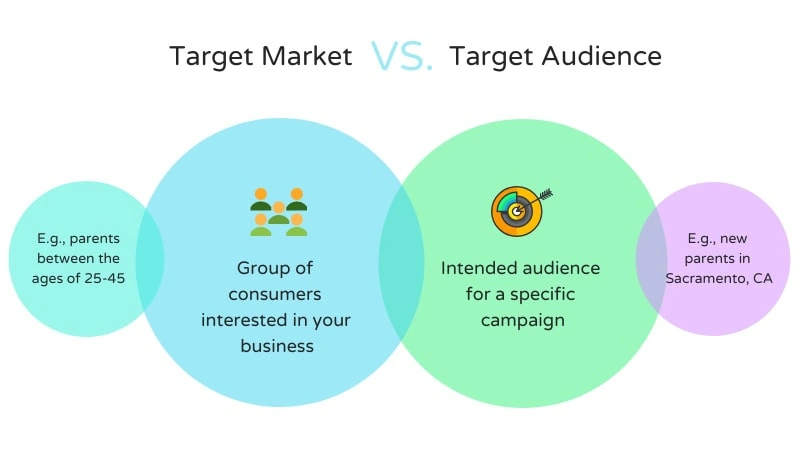
Effectively conducting keyword research is pivotal to any successful online marketing strategy. It starts with a profound understanding of your target audience and their search intent. By comprehending what your potential customers are looking for, you can accurately tailor your content and offerings to match their needs. This, in turn, enhances the chances of your website and content appearing at the top of search engine results, driving organic traffic and boosting your online visibility and revenue.
To begin your keyword research journey, the first step is to know your audience inside out. This involves analysing their preferences, behaviours, pain points, and desires. Creating buyer personas allows you to personify your ideal customers and envision their motivations for searching online. Understanding the intent behind each search query is vital. Are they looking for information, seeking a solution to a problem, or ready to purchase? Identifying the various stages of the buyer's journey will help you strategise your content accordingly.
Once you grasp your target audience, you must employ powerful keyword research tools to uncover valuable insights. Google Keyword Planner is an excellent starting point, providing essential data on search volumes, competition levels, and keyword ideas related to your business niche. Ubersuggest is another valuable tool offering comprehensive keyword suggestions, competitor analysis, and content ideas. By exploring these platforms, you can discover new keywords and prioritise them based on their relevance and potential to attract your desired audience.
Additionally, “Answer the Public” is an outstanding resource to gain deeper insights into your target audience's questions and concerns. It generates many question-based search queries related to your primary keyword, which can be invaluable for content creation and SEO optimisation. By addressing these questions in your content, you demonstrate your expertise and cater to your audience's informational needs, positioning yourself as a credible source in your industry.
Remember that keyword research is not a one-time endeavour. As search trends evolve and customer behaviours change, so should your keyword strategy. Regularly revisit your research and update your targeted keywords to stay relevant and competitive in the ever-changing digital landscape.
3 – Create High-Quality Content
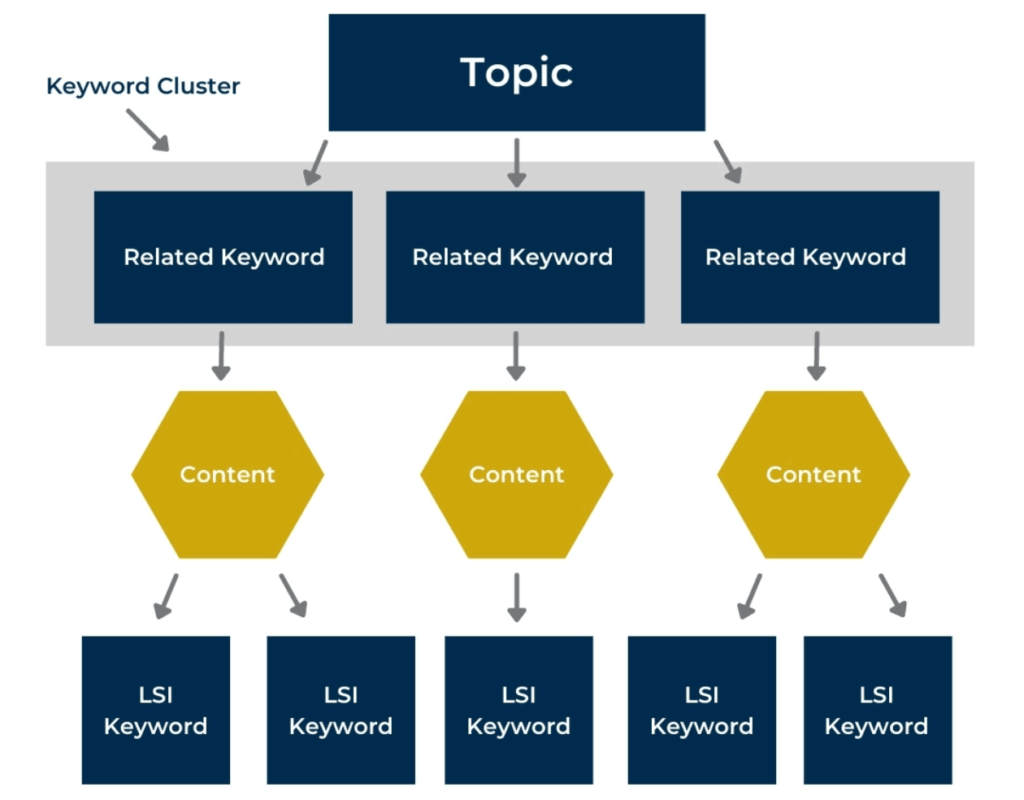
Crafting a compelling content strategy involves identifying and empathising with your audience's pain points while delivering valuable insights to address their needs. Creating long-form, well-researched content aims to educate and profoundly engage your users, fostering a loyal and receptive community.
- Understanding Your Audience: Before delving into content creation, it's essential to conduct thorough research to comprehend your target audience's preferences, challenges, and aspirations. Utilise analytics tools, surveys, and customer feedback to gain insights into their pain points and the topics they find most relevant.
- Identifying Pain Points: Identify your audience's common challenges or problems within your industry or niche. These pain points will serve as the foundation for your content strategy. Tailor your content to provide solutions, tips, and guidance directly addressing these issues.
- Valuable Insights and In-Depth Research: To establish yourself as an authoritative source, focus on delivering high-quality content. This involves conducting in-depth research, gathering data, and citing credible sources to support your claims. Aim for accuracy, uniqueness, and a fresh perspective that sets your content apart from competitors.
- Educational Content: Your content should be informative and valuable, seeking to educate your audience on relevant topics. This could include “how-to” guides, tutorials, industry trends, best practices, case studies, and actionable tips. The more helpful and practical your content, the more likely it is to resonate with your audience.
- Engaging Storytelling: Incorporate storytelling elements into your content to make it more relatable and exciting. Humans connect with stories emotionally, so use real-life examples, anecdotes, and narratives to captivate your audience's attention and leave a lasting impression.
- Long-Form Content: Long-form content provides ample space to explore topics thoroughly and demonstrate your expertise. Lengthier articles, guides, or even ebooks can be valuable resources for your audience, making them more likely to return for more insights in the future.
- Visuals and Multimedia: Enhance your content with relevant visuals, such as infographics, images, videos, and charts, to break up text and present information in a more appealing and digestible manner. Visual content can boost engagement and help explain complex concepts effectively.
- Content Promotion and Distribution: A content strategy is complete with a well-thought-out promotion and distribution plan. Utilise social media platforms, email newsletters, guest posting, and collaborations with influencers or industry partners to extend your content's reach and attract new audiences.
- Interactive Content: Consider incorporating interactive elements like quizzes, polls, surveys, or infographics into your content. This interactivity encourages active participation, enhances user experience, and can lead to increased sharing and engagement.
- Consistency and Monitoring: Maintaining consistency in delivering valuable content is crucial for building trust and loyalty among your audience. Regularly monitor the performance of your content, analyse user engagement metrics, and take feedback seriously to fine-tune your strategy continually.
4 – Optimise On-Page Elements
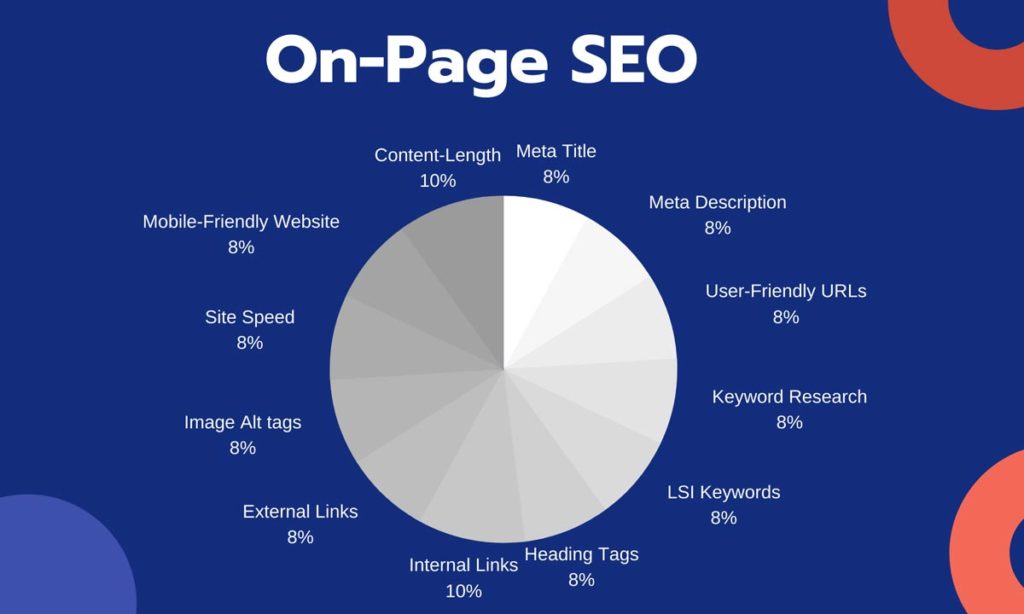
Improving your website's visibility and search engine ranking is crucial for driving organic traffic and attracting potential visitors. One of the fundamental strategies to achieve this is by optimising essential elements such as title tags, meta descriptions, headers, and URLs. By doing so, you can effectively convey the relevance and essence of your content to both search engines and users. Let's delve deeper into each aspect:
- Title Tags: Title tags serve as the main headline for each of your web pages. They are pivotal in search engine results and are typically displayed as clickable links in search engine listings. To optimise your title tags, ensure they are concise, compelling, and accurately represent the page's content. Incorporate relevant keywords that your target audience will likely use when searching for information related to your content. However, remember not to overstuff them with keywords, which can lead to poor user experience and potential search engine penalties.
- Meta Descriptions: Meta descriptions summarise the content on a particular web page. Though search engines no longer use meta descriptions as a direct ranking factor, they significantly impact click-through rates and can influence your page's visibility. Craft engaging and informative meta descriptions, ensuring they contain relevant keywords and a clear call-to-action to entice users to click on your link. Keep them within the recommended character limit to ensure they are displayed in their entirety in search results.
- Headers: Headers, also known as heading tags (H1, H2, H3, etc.), help structure your content and provide hierarchical importance to various webpage sections. Search engines use these headers to understand the context and organisation of your content. Using only one H1 tag per page is vital, ideally containing the page's primary keyword or main topic. Subheadings (H2, H3, etc.) can include secondary keywords and further break down your content for better readability and SEO optimisation.
- URLs: URLs should be user-friendly and reflect the content of the respective web page. Include relevant keywords in the URL to provide users and search engines with a clear idea of what the page is about. Use hyphens to separate words in the URL, as it enhances readability and helps search engines recognise individual keywords more easily. Avoid using special characters or cryptic symbols in URLs, as they confuse users and negatively impact search rankings.
Furthermore, to optimise your website comprehensively, consider implementing the following practices:
- Content Relevance: Create high-quality content that directly aligns with your targeted keywords and search intent. Ensure your content provides valuable information, addresses user queries, and is well-organised with proper headings and subheadings.
- Mobile-Friendly Design: With the increasing use of mobile devices, having a responsive design is crucial. Ensure your website adapts well to different screen sizes and delivers an optimal user experience on mobile devices.
- Page Loading Speed: Page speed is a significant factor for user experience and search engine ranking. Optimise images, minify code and leverage browser caching to improve your website's loading speed.
- Internal Linking: Strategically link related pages within your website to guide users and search engines through your content. This practice also helps distribute link authority and improves the discoverability of your pages.
- External Linking: Link to reputable sources when appropriate and relevant. Outbound links to high-quality websites can demonstrate your website's credibility and authority to search engines.
- Social Media Integration: Promote your content on social media platforms to increase visibility, drive traffic, and potentially earn backlinks from other websites.
By optimising these on-page elements and employing broader SEO strategies, you can enhance your website's visibility, attract organic traffic, and achieve better overall search engine rankings. Remember that SEO is an ongoing process, and staying up-to-date with industry best practices and algorithm updates is vital for long-term success.
5 – Build a Strong Backlink Profile

Embrace a principled approach to link-building that aligns with ethical standards and search engine guidelines. One of the most effective strategies is proactively contacting well-established and authoritative websites within your niche. By forging genuine connections and offering valuable guest posts or content collaborations, you can build a strong network of high-quality backlinks while adhering to ethical principles.
The key to successful ethical link-building lies in creating content that provides real value to the readers of the target websites. Craft informative, insightful, and engaging articles that address their audience's interests and pain points. When you offer valuable content, website owners are more likely to accept your guest posts or collaboration proposals, as it enhances the quality of their platform.
Furthermore, while building relationships with other websites, focusing on relevance is essential. Seek out websites closely related to your industry or subject matter, as this ensures that the backlinks you generate are contextually appropriate and beneficial for both their audience and yours.
Avoid resorting to shortcuts such as purchasing links or participating in link schemes. Search engines continuously evolve their algorithms to detect and penalise such practices, which can seriously harm your website's rankings and reputation in the long run. Instead, build organic and natural links by consistently producing high-quality content that resonates with your target audience.
Personalise your outreach efforts when approaching website owners for guest posts or collaborations. Address them by name and demonstrate a genuine interest in their content and audience. Personalised communication shows that you've done your research and increases the likelihood of a positive response.
As part of your link-building strategy, consider diversifying your content formats. Besides written articles, explore the possibility of creating infographics, videos, or podcasts that can be shared on relevant platforms. Diversification caters to various audience preferences and opens up additional avenues for backlinks.
Moreover, participating in industry-related events, webinars, or conferences can help you establish connections with influential figures and authoritative websites. Networking opportunities like these may lead to potential collaboration invitations or link-sharing partnerships, further strengthening your website's authority in the eyes of search engines.
Lastly, constantly monitor your link profile and conduct regular audits to ensure the quality and relevance of your acquired backlinks. Disavow any links from questionable sources or unrelated websites to maintain a clean and healthy link profile.
6 – Embrace Social Media

Creating and maintaining an active presence on relevant social media platforms is indispensable to modern-day marketing and branding strategies. By leveraging the power of social media, businesses and individuals can effectively reach their target audience, build brand awareness, and establish meaningful connections with their followers. Adopting a multi-faceted approach that involves sharing compelling content, actively engaging with your audience, and nurturing a thriving community around your brand is crucial to optimise your social media strategy.
- Share Captivating Content: The cornerstone of a successful social media presence lies in consistently sharing high-quality and engaging content. Your posts should be informative, entertaining, and visually appealing. Experiment with various formats, such as images, videos, infographics, and interactive content, to cater to different preferences and capture your audience's attention. Valuable and relevant content will keep your followers interested and encourage them to share your posts, expanding your reach organically.
- Understand Your Audience: To engage your audience effectively, it is vital to understand their preferences, pain points, and interests. Conduct thorough research to gain insights into your target demographic's behaviour and preferences. Use social media analytics tools to track post performance, measure engagement metrics, and identify the content that resonates most with your audience. This data-driven approach will enable you to fine-tune your content strategy and create tailored posts more likely to elicit positive responses.
- Foster Two-Way Communication: Social media is not just a one-way communication channel; it's a platform for fostering interactive conversations. Respond to comments, messages, and mentions promptly and thoughtfully. Actively participate in discussions about your industry or niche, demonstrating your expertise and building credibility. Encourage feedback and reviews, and be open to constructive criticism. Embrace transparency and authenticity, as they form the basis of building trust with your audience.
- Embrace Influencer Marketing: Influencer marketing has emerged as a powerful tool for expanding your brand's reach and gaining credibility. Identify influential individuals within your niche who align with your brand values and have a substantial following. Collaborate with these influencers to promote your products or services authentically. Their endorsement can introduce your brand to a broader audience and boost your credibility, increasing engagement and potential new customers.
- Create a Community: Beyond growing a follower count, build a community around your brand. Facilitate discussions, run contests, and create branded hashtags encouraging user-generated content. User-generated content engages your audience and demonstrates people's genuine enthusiasm for your brand. By fostering a sense of belonging and inclusivity, your community members will become brand advocates, sharing their positive experiences and recommending your offerings to others.
- Monitor and Adapt: Social media landscapes are ever-changing, so staying updated with the latest trends and platform updates is essential. Continuously monitor your social media performance and adapt your strategy accordingly. Stay agile and be willing to experiment with new content types, hashtags, and platforms to keep your brand relevant and fresh in the minds of your audience.
In summary, maintaining an active presence on relevant social media platforms involves more than just posting regularly. It's about crafting captivating content, engaging with your audience meaningfully, leveraging influencer marketing, and nurturing a vibrant community around your brand. By incorporating these elements into your social media strategy and consistently refining your approach, you can unlock the full potential of social media as a powerful tool for brand growth and success.
7 – Monitor and Analyse Performance

Monitoring your website's performance is essential to ensure its success and optimise its effectiveness in achieving your business objectives. To achieve this, leverage powerful analytics tools such as Google Analytics, which provides comprehensive insights into your website's traffic, user behaviour, and conversion metrics.
Regularly monitoring and analysing your website's performance through Google Analytics allows you to delve into critical aspects of your online presence. First and foremost, you can assess the volume and sources of your website traffic. Understanding where your visitors come from, whether through search engines, social media, or referrals, empowers you to focus your marketing efforts on the most effective channels.
Going beyond just the numbers, Google Analytics enables you to explore the behaviour of your website visitors. This valuable information reveals which pages attract the most attention, how long visitors spend on each page, and which elements of your site contribute to higher engagement. By identifying the most popular content and the pages where visitors tend to drop off, you can refine your website's structure and content to better cater to your audience's preferences and needs.
In addition to understanding visitor behaviour, conversion metrics play a pivotal role in determining the success of your website. Whether your goal is to drive product purchases, newsletter sign-ups, or any other desired action, conversion tracking in Google Analytics lets you measure the effectiveness of your calls-to-action and marketing campaigns. With this data, you can fine-tune your website's design, messaging, and user flow to enhance conversion rates and boost your business's success.
Regular and thorough analysis of your website's performance is a dynamic process. By setting up specific performance targets and regularly reviewing your data, you can gauge the impact of any changes or updates you make to your site. This iterative approach allows you to adapt swiftly to emerging trends, respond to customer feedback, and seize new growth opportunities.
Furthermore, consider integrating qualitative data into your analysis through user surveys, feedback forms, or usability testing. These insights can complement the quantitative data analytics tools, offering a more holistic understanding of user preferences and pain points. By combining both data types, you can uncover valuable patterns and make well-informed decisions for improving your website's overall user experience.
Remember that the digital landscape constantly evolves, and customer preferences can change rapidly. Therefore, monitoring your website's performance should be an ongoing practice. Regularly tracking and analysing your site's metrics empowers you to identify areas for improvement, capitalise on strengths, and stay ahead of the competition in an ever-changing online market.
Conclusion
Mastering White Hat SEO techniques is the key to sustainable online success. Businesses can build trust, credibility, and long-term growth by prioritising user experience, creating high-quality content, and adhering to ethical practices. In contrast, Black Hat SEO may yield short-term gains, but the penalties and reputation damage risks far outweigh any benefits.
Investing in White Hat SEO is a strategic decision that ensures your website remains in harmony with search engine algorithms while providing value to your target audience. So, take the time to implement these ethical strategies, and your website will be well on its way to achieving lasting success in the competitive digital landscape.
